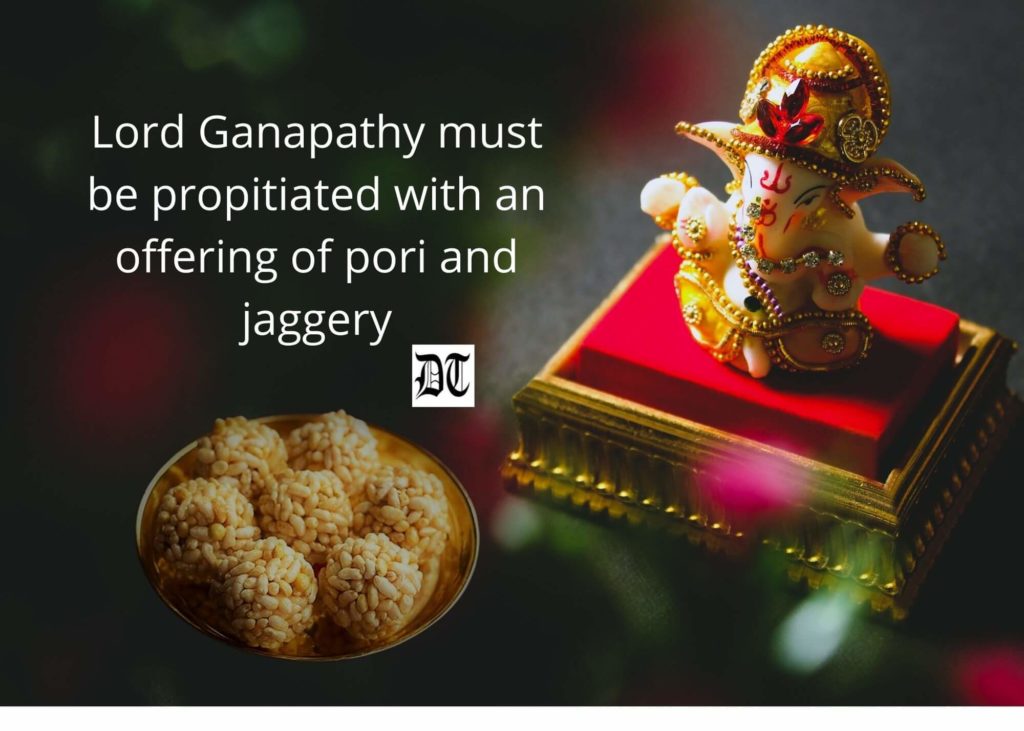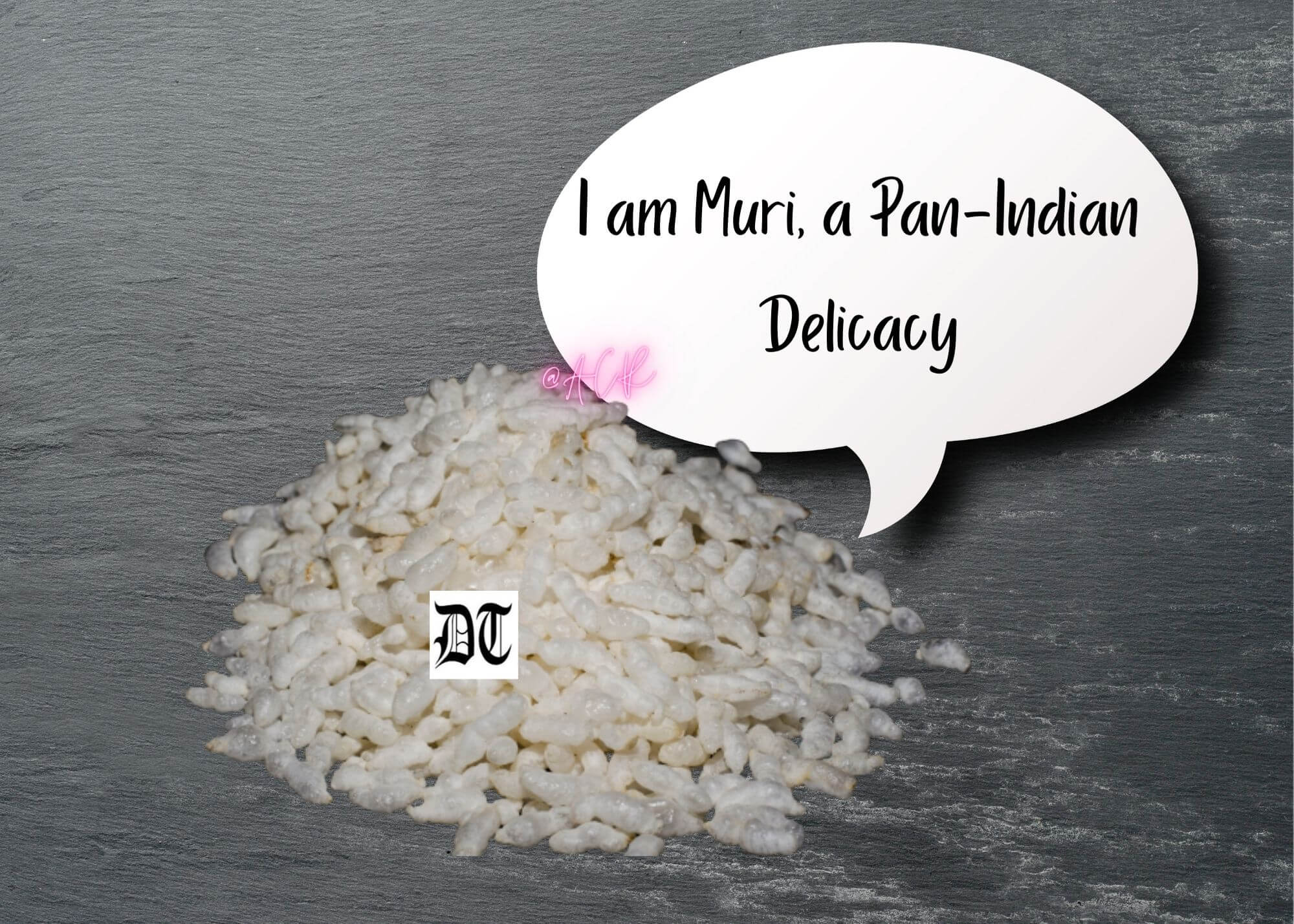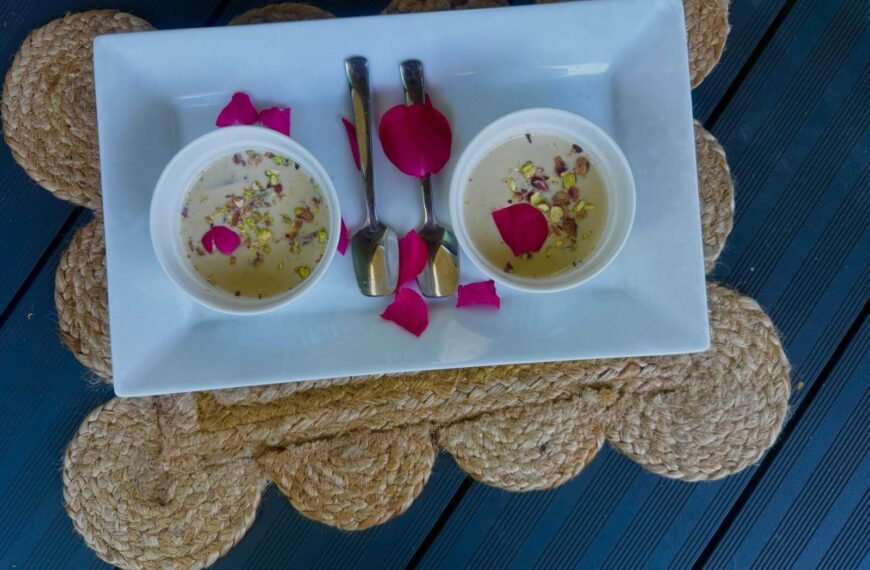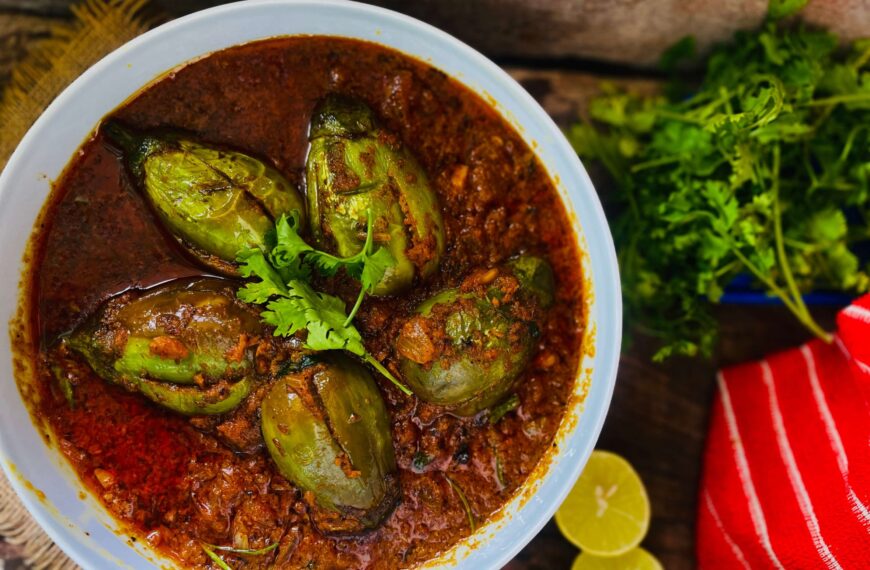Ruchira tells about the ubiquitous puffed rice (muri), a pan-Indian delicacy. It is a popular snack, prasad, breakfast cereal among other things. An exclusive for Different Truths.

Believe it or not, but nothing is as ubiquitous, as handy, and as plentifully available in our country as, you have guessed it right, muri (puffed rice). Across the length and breadth of our land muri is known by various names e.g., pori, puri, murhi, murmura among many.
It might be interesting to know how muri is made. Quite simple. Well, salt is heated in a large wide pan until it is hot enough to pop anything added to it. Next, parboiled, or dried pre-cooked rice is added to the pan and stirred. Puffing starts almost instantaneously and after a while, the puffed rice is scooped out with the help of a large sieve.
As is well-known muri is a staple food consumed widely across the eastern states of Odisha, Bengal, Bihar, Assam, and Tripura. Let us take a random look. In Bihar’s Mithila region and neighbouring West Bengal muri is consumed with dry but spicy cabbage curry, fried fish, and yes, mutton curry!
In Madhya Pradesh, murmura is known as parmal and commonly paired with sev…
In Madhya Pradesh, murmura is known as parmal and commonly paired with sev (fine fried salty filaments of besan/gram flour). In Karnataka, it is mixed with carrots, tomatoes, spices, and coriander leaves to make churumuri, a popular evening snack cum street food — in Uttar Pradesh, it is known as churmura, garnished with sev and peanuts.
What is more, down the years, muri found its way into the portals of temples and shrines as prasadi.e., offering to the deities. For instance, the Prasad of Mata Vaishno Devi (of Jammu Katra fame) invariably contains murmura as does its counterpart distributed at the shrines of Shirdi ke Sai Baba.
In the states of Kerala and Tamil Nadu muri is offered to members of the Hindu pantheon on all auspicious occasions.

In the states of Kerala and Tamil Nadu muri is offered to members of the Hindu pantheon on all auspicious occasions. For example, Lord Ganapathy must be propitiated with an offering of pori and jaggery. The devout pilgrims, who annually throng the renowned Sabarimala shrine in Kerala carry a unique cloth bundle Irumudikettu packed with puffed rice and jaggery as offerings for Lord Ayyappan.
In a personal vein, I clearly recall how in the summer of 83, I went to Kolkata en famille to attend a wedding. One day after a bout of shopping we landed up in the home of one of dad’s sisters and were treated to piping hot telebhaja/fritters and loads of muri! The taste of the snack was further heightened when washed down with gallons of hot tea. My aunt has since departed this world, but this incident lingers on in my mind.
I am told Bengalis on this side of the border are not too fond of muri-payesh.
During their lifetimes both my dad and the father-in-law (PBUH) loved to sample payesh (kheer), the plain one with sugar, or the one enriched with nolen gur /palm jaggery with muri. This snack is typical of (East Bengal) Bangladesh. Coincidentally both these gentlemen hailed from the same district Faridpur of the neighbouring nation. I am told Bengalis on this side of the border are not too fond of muri-payesh. Muri is also a favourite accompaniment for coconut naadoos /laddoo.
When we children of the 1960s, were toddlers, cornflakes and other breakfast cereals were not quite in vogue. So, we kids were fed doodh muri (murmura) doused in piping hot milk. It used to be both nutritious and filling. In the southern states of Andhra Pradesh and Telangana tiny children are commonly handed out bongulo balls comprising puffed rice glued together with the help of molten jaggery. This has an uncanny similarity with the good old mowa that most Bengalis are familiar with. Crispy and light in weight, they can be stored for long in airtight containers. Getting hunger pangs in between meals? Grab a mowa! It will quench your craving for a while.
…the crowning glory of muri-based snacks remains the immensely popular Bombaiyya bhelpuri, while not forgetting the Bengali jhaalmuri.
However, the crowning glory of muri-based snacks remains the immensely popular Bombaiyya bhelpuri (a native of Mumbai and Maharashtra), while not forgetting the Bengali jhaalmuri. Though both are basically potpourris, yet their ingredients differ a good deal. For instance, sev, and characteristic tamarind, green and red chutneys sine qua non for bhelpuri are conspicuously absent from jhalmuri. On the other hand, you could add chopped cucumber, chopped coconut kernel, boiled Bengal grams/kala chana, fresh lemon juice, and spicy oil from the pickle jar in your kitchen to your bowl of jhalmuri.
So, what are you waiting for? Grab a bowl of muri and top it with anything that suits your fancy and taste. It will be a delightful experience for sure.
Visuals by Different Truths







 By
By

 By
By